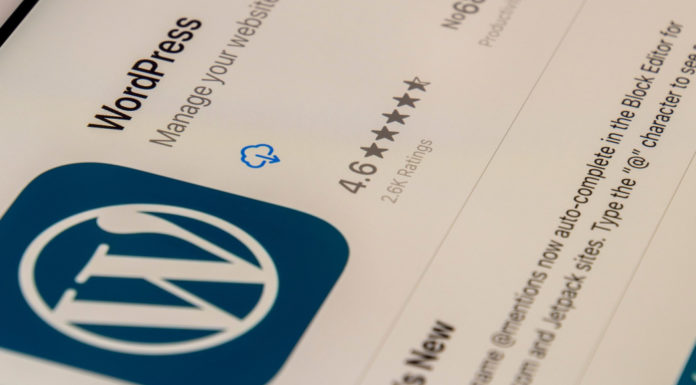Given today’s fast-paced environment, businesses should consider leveraging technology to streamline onboarding. It helps enhance efficiency and ensures a positive experience for new hires. From automating administration to adding personalization and providing ongoing training, technology can simplify and improve the onboarding journey. Below, check out some ways of using technology to streamline the onboarding process.
Automating Administration
One of the many ways technology can streamline the onboarding process is by automating administrative tasks. Traditionally, onboarding involves plenty of paperwork and manual processes, which can be time-consuming and prone to errors. By leveraging technology, companies can automate many administrative tasks, from filling out forms to verifying documents and setting up employee accounts.
For instance, digital onboarding platforms can automatically generate and send welcome emails, collect necessary personal information, and manage compliance documentation. New hires can complete forms electronically, reducing the need for physical paperwork and ensuring all data is accurately captured and securely stored.
Automated systems can also handle the scheduling of training sessions, meetings, and introductory calls, ensuring new employees can integrate into the team without constant manual intervention. Moreover, these platforms can provide new hires access to self-service portals where they can find answers to common questions, company policies, and other essential resources, thus reducing the burden on HR personnel.
By automating administrative tasks, technology can speed up the onboarding process and enhance the overall onboarding experience.
Create Flexibility

Starting a new job can be overwhelming due to the sheer volume of information new hires need to absorb. Thankfully, technology can significantly alleviate this by making onboarding resources more flexible. By leveraging digital platforms, companies can provide new employees with 24/7 access to a wealth of training materials, company policies, and other essential information.
These resources can be organized in a centralized, easily navigable online portal, allowing new hires to find what they need quickly and efficiently. Interactive training modules, video tutorials, and detailed guides can be available at their fingertips, enabling them to learn at their own pace and revisit materials as needed. This on-demand access ensures that employees can engage with the content when it suits them best, leading to better retention of information and a more personalized onboarding experience.
Furthermore, technology can facilitate real-time communication and support through chatbots, forums, and virtual mentors, offering instant assistance and answers to any questions. The level of support helps new employees feel more confident and less isolated during their initial days.
Tracking Progress
Onboarding systems can help track a new hire’s progress throughout the onboarding cycle. Automated systems can monitor an employee’s performance through various stages of the onboarding process, immediately flagging any issues or delays. For example, if a new hire cannot complete essential training modules on time or struggle with tasks, the system can automatically alert managers or HR personnel. This proactive approach allows them to address potential problems, preventing issues from escalating.
In addition, these technological tools can provide detailed analytics and insights into areas where new hires may need extra support. It can identify patterns and common challenges, allowing organizations to tailor their onboarding programs to suit individual needs. For instance, if data reveals that many new hires find a particular training module challenging, the content can be reviewed and adjusted to enhance clarity and effectiveness.
Moreover, this data-driven approach allows companies to refine and improve their onboarding programs. By analyzing feedback and performance metrics, organizations can implement targeted improvements, ensuring that the onboarding experience remains relevant, engaging, and effective for all new hires.
By leveraging technology to track progress and support new hires, companies can simplify onboarding while ensuring that new hires receive the guidance and resources they need to succeed. There are several excellent employee onboarding software and tools available and utilizing these tools can enhance the onboarding experience, increase employee satisfaction, and improve retention rates.
Add Personalisation

Technology can significantly enhance the personalization of the onboarding process by tailoring content to be relevant to each new hire’s specific role and experience. Unlike the traditional one-size-fits-all approach, modern digital platforms can analyze an individual’s background, skills, and job requirements to deliver customized onboarding experiences.
For example, you can provide a new hire in a technical position with specialized training modules, software tutorials, and project-related information that aligns directly with their role. On the other hand, someone in a managerial position might receive content focused on leadership development, company culture, and strategic planning. This targeted approach ensures new employees get the most pertinent information and resources, enabling them to acclimate quickly and effectively.
Moreover, technology can adapt the onboarding process based on the new hire’s prior experience. For experienced professionals, companies can streamline the onboarding content to focus on advanced topics, while entry-level employees can receive more foundational training and support. Interactive platforms can also assess progress and adjust the learning path in real-time, ensuring that new hires are neither overwhelmed nor under-challenged.
Using technology to personalize onboarding allows companies to provide a more engaging and efficient experience. Aside from helping new hires feel valued and understood, it accelerates their integration and productivity within the organization.
Provide Ongoing Training
Technology allows companies to provide ongoing employee training, significantly enhancing the onboarding experience. Instead of limiting training to the initial phase of employment, digital platforms enable continuous learning and development, ensuring that employees remain engaged and updated throughout their tenure.
With technology, companies can deliver training materials, updates, and skill-building resources on an ongoing basis. E-learning platforms, webinars, and online courses can be tailored to individual career paths, allowing employees to expand their knowledge and competencies relevant to their roles. This continuous access to training helps employees stay current with industry trends, new technologies, and best practices.
Moreover, technology facilitates just-in-time learning, where employees can access training resources exactly when needed. This immediacy ensures that employees can apply new skills and knowledge directly to their tasks, increasing their effectiveness and confidence in their roles.
Ongoing training also allows companies to gradually introduce more complex concepts and responsibilities, preventing information overload during the initial onboarding period.




































